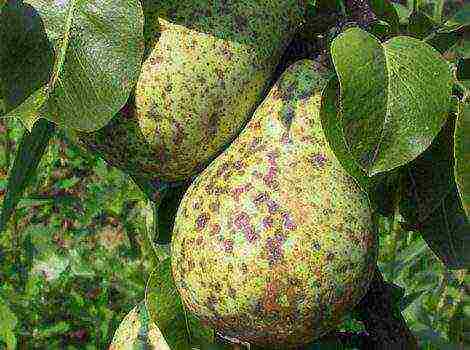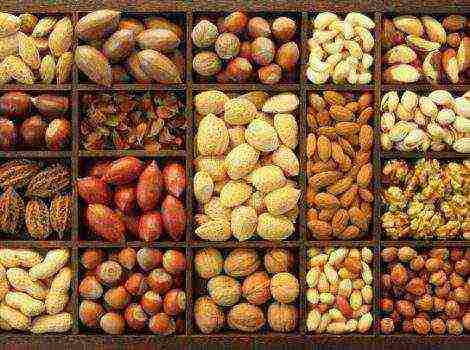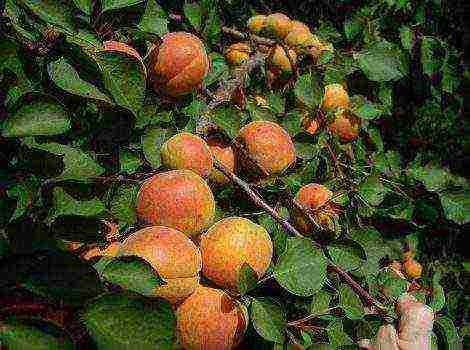Correct planting and caring for red-leaved hazel
Red-leaved hazel has been known for a long time for the benefits of its fruits and excellent melliferous properties. Besides shrub is actively used for decorative purposes... It fits well into the landscape and serves as a worthy decoration of personal plots.
Description of hazel Krasnolistnaya
Hazelnut Krasnolistnaya is a monoecious shrub that grows mainly in central Russia, which is often called hazelnuts. Naturally grows in deciduous and mixed forests, but can be found in the steppe, forest-steppe. Prefers moist soil, rich in mineral fertilizers.
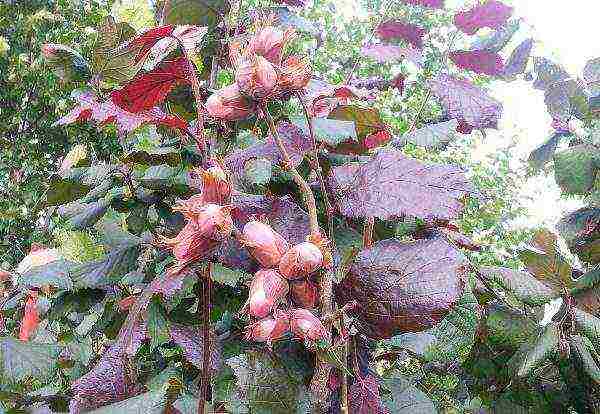
Plant height ranges from 3 to 7 meters... Hazel leaves are oval-round reddish brown. The underside of the leaf plate becomes green by autumn. Female flowers and male catkins grow on one plant. They bloom in early spring, even before the leaves appear. Hazel blossoms in mid-March, fruits ripen in August - September. It grows quickly, begins to bear fruit already at 4 - 5 years after disembarkation... The fruits of hazel are called nuts. Nuts are combined into infructescences of 2 - 5 pieces. The shrub bears fruit annually, but yields alternate from moderate to plentiful. The total life span of the bush is 50 - 80 years.
Nut composition and benefits
Hazelnuts are incredibly healthy. They contain in their composition:
- fats;
- easily digestible proteins;
- sucrose;
- B vitamins;
- group E vitamins;
- vitamins of group C;
- iron salts.
Eating hazel nuts is good for both adults and children. They provide the young body with trace elements necessary for growth. Supports heart and brain function in adulthood... Kernels are eaten raw, roasted, dried. They are added to soups, stews, desserts, liqueurs. Nut flour, crushed and ground nuts are widely used in cooking.

Hazel has always been famous not only for its taste, but also for its medicinal properties.:
- Fresh kernels are thoroughly ground with a little water to obtain nut milk. Such a product has a high nutritional value and recommended for use by weakened patients.
- Nut infusions successfully used for diseases of the lungs, kidneys and stomach.
- Nuts grated with honey have a beneficial effect on the circulatory system the body, relieve pain in rheumatism and gout.
- Nut flour mixed with whipped egg yolk - an excellent remedy for heat burns.
- Peanut butter widely used in the fight against helminths. It is also added to many moisturizing beauty masks and creams.
- Nut infusions significantly enhance immunity and increase hemoglobin.
- Due to the combination of zinc and B vitamins, hazel fruits used to increase potency, stimulation of spermatogenesis and normalization of the pelvic organs.
- Nuts are lactogenic and help to increase milk supply in lactating women.
- Hazelnut extract increases the tone of the central nervous system, normalizes bowel activity.
- Vitamin E in nuts helps to cope with sore throats and colds.
Planting and caring for a tree
Almost all types of soils are suitable for planting hazel, except for arid and swampy. Grows best in fertile, drained soil without a lot of stones and sand... The bushes are quite shade-tolerant, but in closed shaded areas, the yield is significantly reduced. Prefers well-lit, windless places - slopes, gullies, forest outskirts. The plant is frost-hardy, but in severe winters there is a danger of freezing. It is recommended to plant on the eastern, northeastern low slopes, since in spring the least temperature fluctuations occur here, which will reduce the likelihood of inflorescence burns.
It is recommended to plant the plant in spring or autumn, but the most favorable time is mid-September. To plant a bush, you need to prepare a hole 70x60 cm... A thick layer of humus is laid out at the bottom of the pit at the rate of 10 - 15 kg per plant. For good survival of the bush, you can add potassium salt and superphosphate to humus. It is also recommended to add soil from under another growing hazel to the planting hole. Mycoses are formed on the roots of the bush, which are a combination of fungi and the root system of a plant. Adding such soil allows the seedling to grow and develop faster.
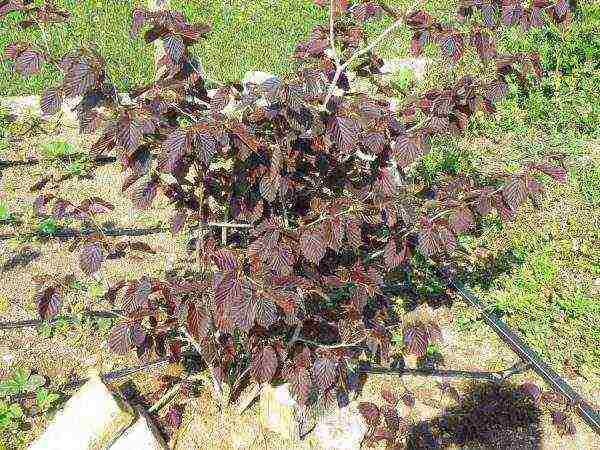
Before planting, seedlings must be cut to 25 - 35 cm... The root system must be placed in a special mixture of humus and clay - this will improve the survival rate of the plant.
Bushes can be planted at a distance of 5 - 6 m from each other. If Krasnolistnaya hazel is planted for decorative purposes, then the distance can be reduced to 3 - 4 m. The planted seedling must be tied to a wooden support.
To get a rich harvest, you need proper and timely care of the plant.:
- Watering... Despite the drought tolerance, the plant should be watered regularly. It is especially important during planting and rooting of the seedling. It is better to water hazel early in the morning or late in the evening so that the scorching sun does not harm the roots. It is better to use warm spring water for irrigation.
- Top dressing... It is recommended to feed the bush with organic fertilizers once every 3-4 years, and mineral fertilizers must be applied every year. Before the appearance of fruits, you can fertilize the soil with urea.
- Formation... For good growth and development, the bush must be thinned out. In the fall, 1 time in 6 - 9 years old, underdeveloped branches should be sawed off, leaving 7 - 10 trunks. It is important to make sure that the trunks branch off evenly from the root, and not clump together on any one side. If preference is given to the formation in the form of a tree, then 1 trunk is left, from which skeletal branches then branch off.
- Loosening... It is advisable to loosen the soil after each watering of the plant. This is especially important during the rooting process.
Breeding rules for this variety
There are several ways of breeding hazel. It reproduces by seeds, layering, dividing the bush and cuttings... It is important to remember that the varietal characteristics are fully preserved by hazel only during vegetative propagation.
Layers
Red-leaved hazel reproduces well by layering. For this purpose, young annual shoots are used. A small groove is dug next to the shoot 15 - 20 cm... The shoot bends down into a groove, is covered with earth and abundantly watered with warm water. The top of the shoot must be firmly tied to a wooden peg placed next to it. You should not separate the shoot from the mother bush.
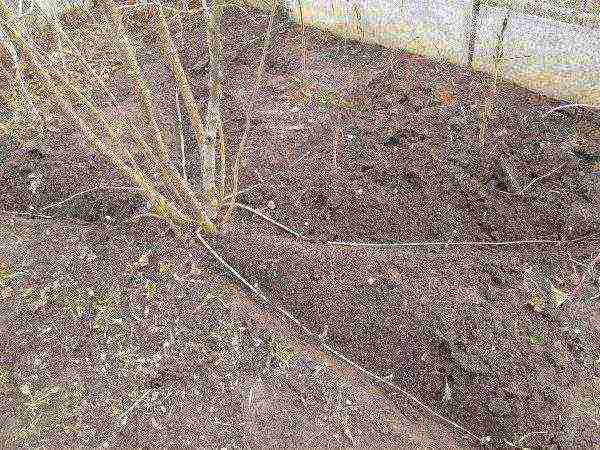
After a month, the buds on the shoot give their own shoots. In the middle of summer when they grow to 15 - 20 cm, they spud on 2/3 heights... Over the summer, hilling is repeated 3-4 times. When transplanting, the processes are separated from each other. Several new seedlings are obtained from one shoot.
Seeds
Seed propagation is a rather long and laborious process. Large ripe nuts are selected for sowing. Can be planted in autumn and spring. Sowing is recommended to be carried out in fertilized moist soil to a depth 5 - 6 cm.
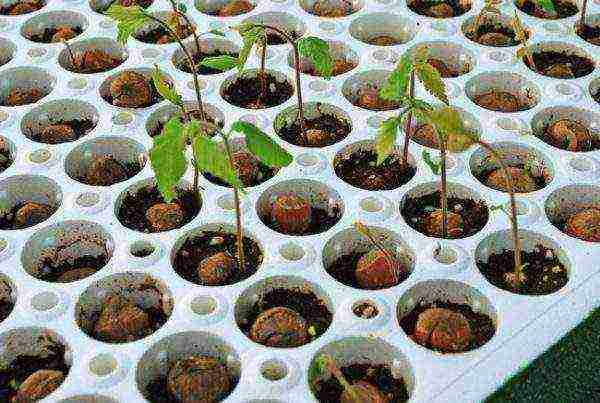
The distance between the seeds in the groove should not be less 10 cm, between grooves - not less 20 cm... The top of the groove is covered with a mixture of humus and peat 3-5 cm thick. If the seeds are planted in autumn, then the grooves should be insulated with sawdust, hay or moss. Seedlings are dug out of the garden bed 2 years after germination and planted in a permanent place.
By dividing the bush
By dividing the bush, Krasnolistnaya hazel reproduces quite easily. The dug out bush must be divided into several parts so that in each part there is a trunk with roots of length 20 - 30 cm... Each part is planted in a deep hole and watered abundantly with warm water. This method is actively used in the discharge of walnut plantations.
By cuttings
Red-leaved hazel takes root hard and takes a long time. The most favorable outcome is possible when using cuttings from a two-year-old shoot. DFor grafting, the strongest shoots are selected, which are cut off from the bush in the morning... They are planted in the ground from a mixture of sand and peat. The soil must be constantly moistened. Direct sunlight is harmful to cuttings, as are cold drafts.
Harvesting
Red-leaved hazel begins to bear fruit on 4-5 years own life... Nuts ripen in August - September, rarely at the end of July. The main sign of ripeness is the yellowing of the fruit and their separation from the branches. The harvest from one bush can reach 20 Kg... The fruits collected for storage are recommended to be dried and stored in canvas bags.
Susceptibility to disease and pests
Hazel is a fairly disease-resistant variety. The main pests affecting the plant include the following:
- nut weevil;
- kidney mite;
- common aphid;
- scabbards;
- caterpillars
- boring beetles.
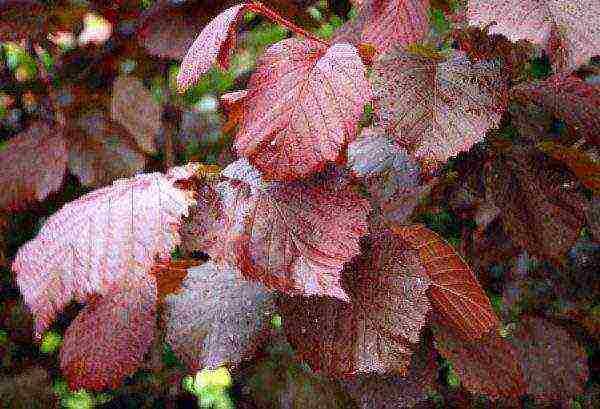
Bushes should be protected from pests Intavir... Early treatment is recommended to be done before the buds open, repeated - after the formation of leaves.
Red-leaved hazel is susceptible to various fungal diseases... Colloidal sulfur is used against them and the bush is sprayed with a Bordeaux mixture.
Squirrels, walnuts and woodpeckers cause serious damage to the crop.
Red-leaved hazel is easy to plant and grow, easily tolerates changes in temperature and humidity. It is highly adaptable.... With minimal maintenance, it will delight the gardener with high productivity and aesthetic beauty.
